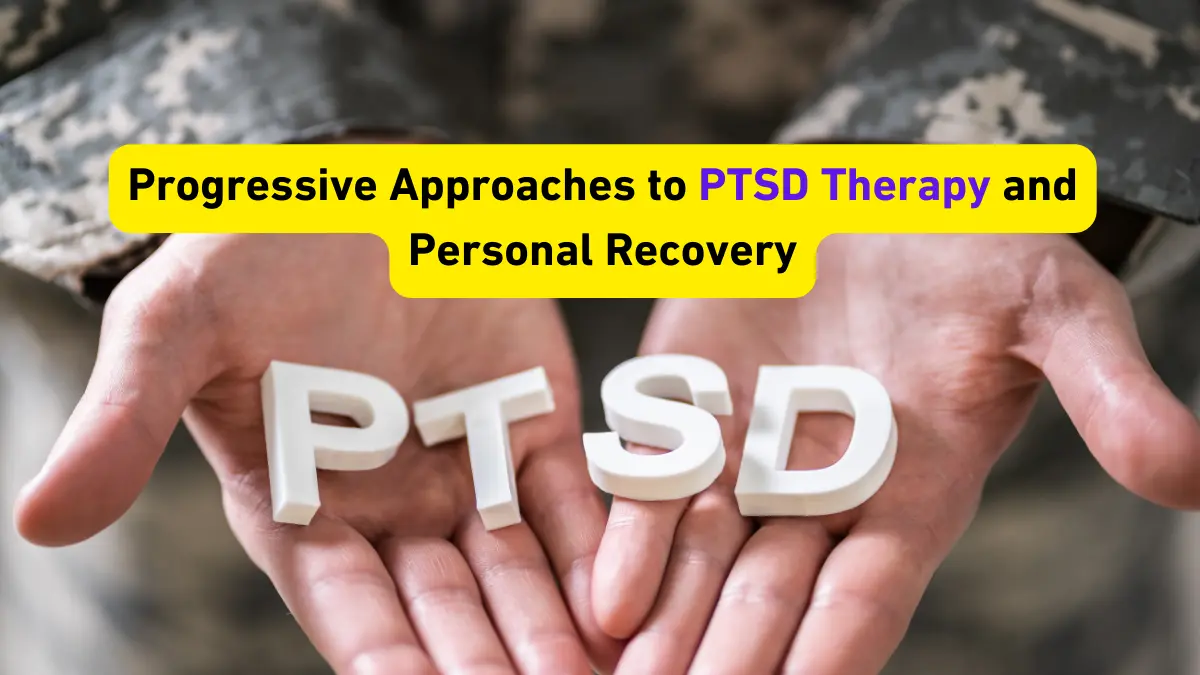Post-Traumatic Stress Disorder (referred to as PTSD) is a challenging and complex mental health condition that arises after experiencing or witnessing traumatic events. Traditional treatments like Cognitive Behavioral Therapy (CBT) and medications have been effective for many, but progressive approaches are offering new hope for those who struggle with PTSD. This article explores advanced therapeutic strategies and personal recovery practices that are making significant strides in the treatment of PTSD Therapy.
Understanding What PTSD Is
PTSD can develop after a traumatic event, such as natural disasters, military combat, sexual assault, or serious accidents. Symptoms can include intrusive memories, recurrent, unwanted, distressing memories of the traumatic event, avoidance of places, activities, or people that remind the individual of the trauma, negative changes in thinking and mood, feelings of hopelessness, detachment from family and friends, and difficulty experiencing positive emotions, and changes in physical and emotional reactions, being easily startled, feeling tense, and having difficulty sleeping or concentrating.
Progressive for PTSD Therapy
While traditional therapies like CBT and medications remain foundational, several progressive approaches are emerging to enhance the treatment landscape for PTSD.
- Somatic Experiencing (SE)
Somatic Experiencing focuses on the body’s physiological responses to trauma and aims to release stored trauma through awareness and physical sensations. The process includes developing awareness of physical sensations associated with trauma, moving between states of distress and calm to gradually release trauma, and working with small amounts of traumatic material to avoid overwhelming the individual. This therapy addresses the physical and emotional components of trauma and promotes resilience and recovery through body awareness.
- Ketamine-Assisted PTSD Therapy
Ketamine-assisted therapy is a novel approach that has shown promise for treatment-resistant PTSD. Originally used as an anesthetic, ketamine has rapid antidepressant and anti-anxiety effects. The process involves visiting an experienced clinic, such as DaydreamMD.com, which can administer ketamine intravenously or as a nasal spray (esketamine) in a controlled medical setting. It is followed by therapy sessions to process and integrate experiences from the ketamine sessions. This therapy provides rapid reduction in symptoms, often within hours, and is effective for individuals who have not responded to traditional treatments.
- Virtual Reality Exposure Therapy (VRET)
VRET uses immersive virtual environments to help individuals confront and manage their traumatic memories in a controlled setting. The process involves creating virtual scenarios that mimic the traumatic event, gradually exposing individuals to these scenarios to reduce avoidance and desensitize traumatic memories, and providing ongoing support from a therapist to process the experiences. This therapy provides a safe and controlled environment for exposure therapy and is effective for various types of trauma, including combat-related PTSD Therapy.
Personal Recovery Strategies
In addition to professional therapies, personal recovery strategies play a crucial role in managing PTSD and promoting long-term well-being.
- Physical Activity
Regular physical activity can help manage symptoms of PTSD by releasing endorphins and improving overall mental health. Activities such as aerobic exercise (running, swimming, cycling, or dancing) and mind-body exercises (yoga, tai chi, or Pilates) reduce stress and anxiety, improve mood, and enhance physical fitness.
- Social Support
Building a strong support network is essential for recovery from PTSD. Connecting with others who understand and provide emotional support can make a significant difference. Strategies include joining support groups for individuals with similar experiences, engaging with loved ones who offer support and understanding, and maintaining regular sessions with a therapist to process experiences and emotions. Social support provides emotional support, reduces feelings of isolation, and offers practical advice and coping strategies.
- Creative Outlets
Engaging in creative activities can provide a therapeutic release for emotions and help process traumatic experiences. Activities such as art therapy (using drawing, painting, or sculpture to express emotions), music therapy (playing, listening to, or composing music to process feelings), and writing (journaling or writing stories to explore and understand personal experiences) facilitate emotional expression and processing, providing a constructive and enjoyable outlet for emotions.
Conclusion
Progressive approaches to PTSD therapy and personal recovery offer new hope and effective strategies for managing and overcoming the debilitating effects of trauma. From innovative therapies like EMDR, Somatic Experiencing, and ketamine-assisted therapy to personal recovery practices such as mindfulness, physical activity, and creative outlets, individuals can find a comprehensive and tailored approach to healing. By integrating these advanced treatments and personal strategies, those affected by PTSD can achieve lasting relief and improve their quality of life.
